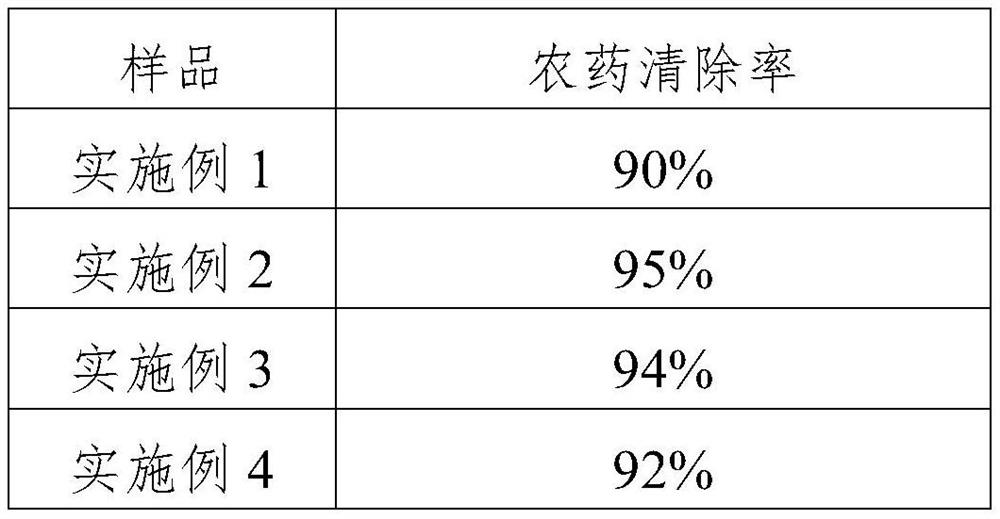A cleaning agent that can effectively remove pesticide residues, aflatoxins and harmful bacteria
A technology for aflatoxins and pesticide residues, applied in the field of cleaning agents, can solve problems such as ineffective removal, dry skin, and wrinkled skin, and achieve the effects of ensuring food safety, reducing irritation, and degrading pesticide residues
- Summary
- Abstract
- Description
- Claims
- Application Information
AI Technical Summary
Problems solved by technology
Method used
Image
Examples
Embodiment 1
[0022] 500 grams of oyster shells and 160 grams of magnesium carbonate were pulverized and mixed, calcined for 1.5 hours at a temperature of 780° C., cooled to room temperature to obtain 210 grams of calcined material, and the calcined material was placed in a slurry tank, and 400 grams of deionized water was added. Stir for 1 hour, then add 6 grams of chitin, 12 grams of magnesium chloride, 3 grams of citric acid, 14 grams of sodium citrate, and 10.5 grams of sodium dihydrogen phosphate, ball mill, pass through a 1250-mesh sieve, and spray dry.
Embodiment 2
[0024] 500 grams of scallop shells and 120 grams of magnesium carbonate were pulverized and mixed, calcined for 1.2 hours at a temperature of 820° C., cooled to room temperature to obtain 174 grams of calcined material, and the calcined material was placed in a slurry tank, and 360 grams of deionized water was added. Stir for 1 hour, then add 8.4 grams of chitin, 1.8 grams of magnesium chloride, 12.5 grams of citric acid, 4.2 grams of sodium citrate, and 9.2 grams of sodium dihydrogen phosphate, ball mill, pass through a 1250-mesh sieve, and spray dry.
Embodiment 3
[0026] 500 grams of mussel shells and 80 grams of magnesium oxide were pulverized and mixed, calcined for 0.5 hour at a temperature of 850° C., cooled to room temperature to obtain 168 grams of calcined material, and the calcined material was placed in a slurry tank, and 270 grams of deionized water was added. Stir for 0.5 hours, then add 3.5 grams of chitin, 14 grams of magnesium chloride, 1.8 grams of citric acid, 8 grams of sodium citrate, and 13.2 grams of sodium dihydrogen phosphate, ball mill, pass through a 1250-mesh sieve, and spray dry.
PUM
 Login to View More
Login to View More Abstract
Description
Claims
Application Information
 Login to View More
Login to View More - R&D
- Intellectual Property
- Life Sciences
- Materials
- Tech Scout
- Unparalleled Data Quality
- Higher Quality Content
- 60% Fewer Hallucinations
Browse by: Latest US Patents, China's latest patents, Technical Efficacy Thesaurus, Application Domain, Technology Topic, Popular Technical Reports.
© 2025 PatSnap. All rights reserved.Legal|Privacy policy|Modern Slavery Act Transparency Statement|Sitemap|About US| Contact US: help@patsnap.com



